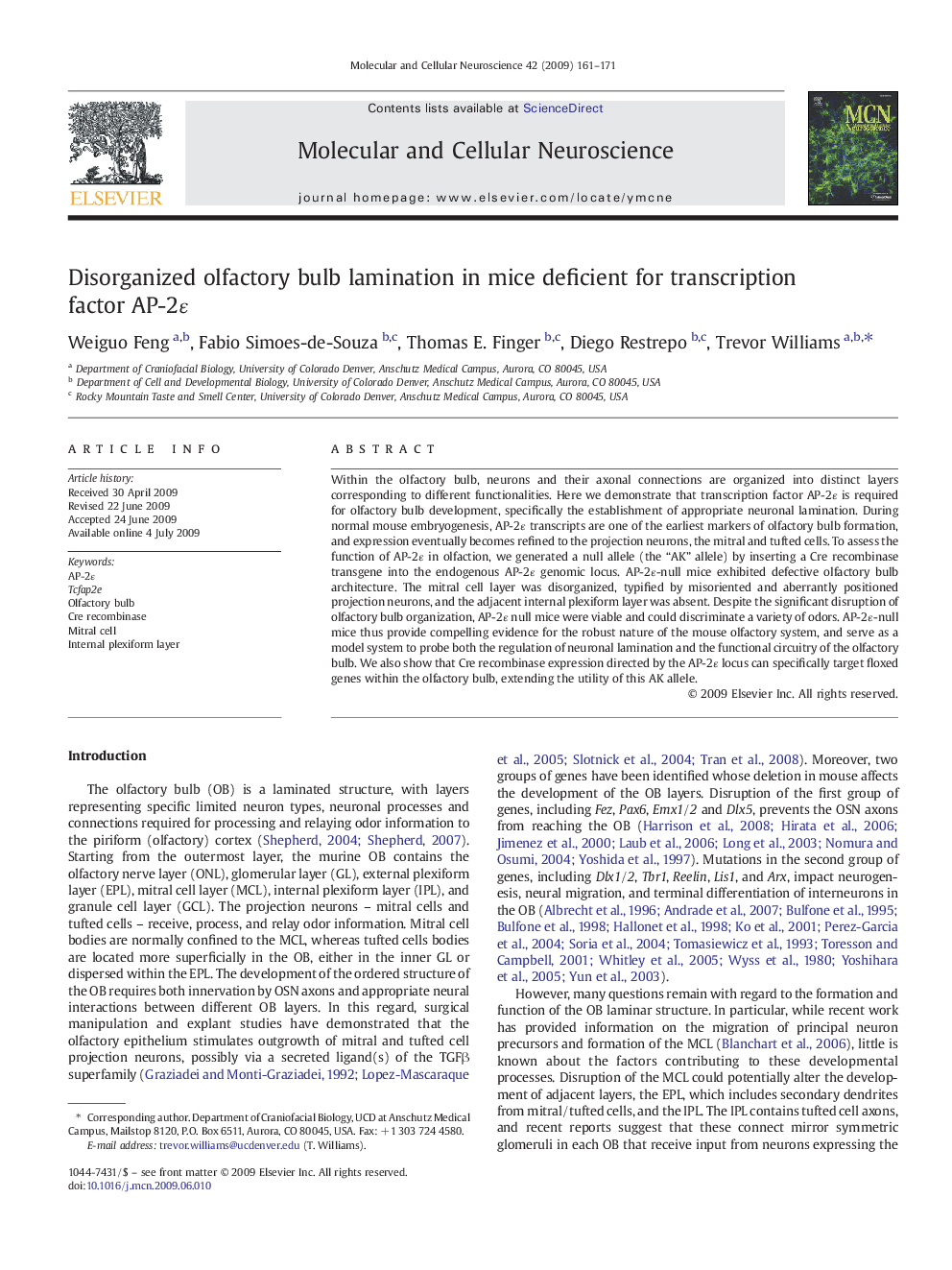| Article ID | Journal | Published Year | Pages | File Type |
|---|---|---|---|---|
| 10956677 | Molecular and Cellular Neuroscience | 2009 | 11 Pages |
Abstract
Within the olfactory bulb, neurons and their axonal connections are organized into distinct layers corresponding to different functionalities. Here we demonstrate that transcription factor AP-2É is required for olfactory bulb development, specifically the establishment of appropriate neuronal lamination. During normal mouse embryogenesis, AP-2É transcripts are one of the earliest markers of olfactory bulb formation, and expression eventually becomes refined to the projection neurons, the mitral and tufted cells. To assess the function of AP-2É in olfaction, we generated a null allele (the “AK” allele) by inserting a Cre recombinase transgene into the endogenous AP-2É genomic locus. AP-2É-null mice exhibited defective olfactory bulb architecture. The mitral cell layer was disorganized, typified by misoriented and aberrantly positioned projection neurons, and the adjacent internal plexiform layer was absent. Despite the significant disruption of olfactory bulb organization, AP-2É null mice were viable and could discriminate a variety of odors. AP-2É-null mice thus provide compelling evidence for the robust nature of the mouse olfactory system, and serve as a model system to probe both the regulation of neuronal lamination and the functional circuitry of the olfactory bulb. We also show that Cre recombinase expression directed by the AP-2É locus can specifically target floxed genes within the olfactory bulb, extending the utility of this AK allele.
Related Topics
Life Sciences
Biochemistry, Genetics and Molecular Biology
Cell Biology
Authors
Weiguo Feng, Fabio Simoes-de-Souza, Thomas E. Finger, Diego Restrepo, Trevor Williams,
